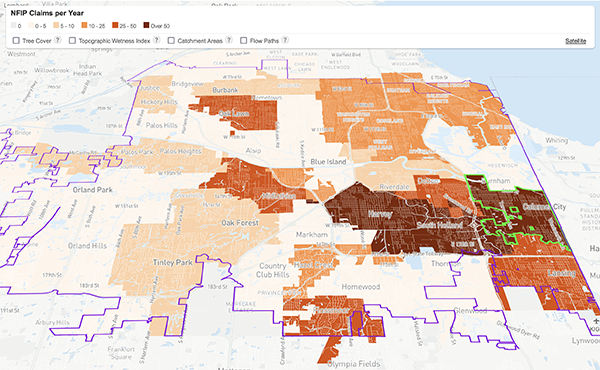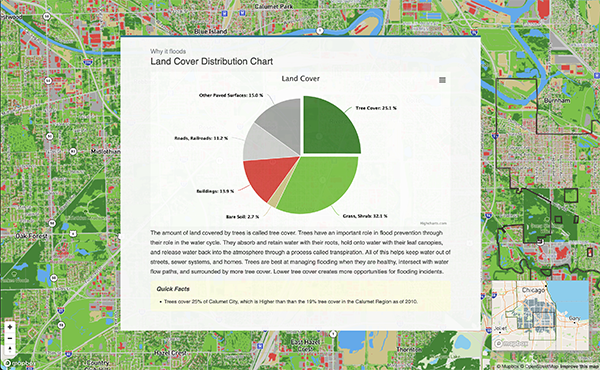General Flooding Guidance
- RainReady Government Resources
This resource developed by CNT links out to various entities (government agencies and non-governmental organizations) that provide resources, funding, technical and advocacy support, and other means of support to individuals and local governments. - 10 Facts About Flooding
This factsheet from American Rivers gives helpful information for residents living in frequently flooded areas.
Identification of Flood Risks
- RainReady Flood Risk Assessment
This assessment tool from CNT guides users through a set of questions that help to identify the likelihood of flooding, type of flooding, and flood history based on the property’s location.
Flood Preparation, Prevention, and Mitigation Resources
- RainReady Preparing for Heavy Storms Guide
This guide developed by CNT provides a summary of steps to take before, during, and after major storm events to prepare your home. - RainReady Homeowner Action Guide
This guide developed by CNT provides a simple checklist for homeowners looking to protect their homes from flooding. - RainReady Factsheets
This guide from CNT provides more detailed resources to homeowner flooding action plans, such as insurance policy guidance and how to make your yard RainReady. - RainReady Video Tutorials
These videos teach about signs of water entry in your home, how to prevent floods, how a backflow preventer works, how to install rain barrels, how water systems work in the home, and how to properly clean your gutters. - Flood Prevention Checklist
This guide from Computer Network provides steps homeowners can take now to prevent future flooding and flood damage in their homes. - Reduce Flood Risk Mitigation Strategies
This tool developed by the Association of State Floodplain Managers provides various, detailed flood mitigation guides that can be adjusted based on cost, maintenance level required, type of property, past flood levels, along with other scales. - MWRD Green Neighbor Guide
This manual from MWRD provides a step-by-step guide on do-it-yourself (DIY) stormwater management projects for your property including: downspouts disconnection, rain barrel installation, dry wells and rain gardens installation, and replacement of asphalt and concrete surfaces with permeable paving. Materials, cost, time, and labor intensity are specified for each project so you can determine which one is best for your property.
Flood Safety
- American Red Cross Flood Safety
This guide developed by the American Red Cross helps homeowners prepare for any kind of flooding, and provides information on what residents should do during a flood and how to recover after one.
Flood Clean Up, Home Repairs, and Public Health Safety
- Repairing your Flooded Home
This resource developed by The Red Cross and FEMA provides valuable guidance to homeowners and renters on how to repair your home after a flood. - What to do Within 24 Hours After a Flood
This checklist from Houselogic created by Realtors® a member of the National Association of Realtors®, identifies actions homeowners can take after they have experienced flooding. - After the Flood
This brochure from the Illinois Department of Public Health provides homeowners with steps to protect themselves in the cleanup process. - Health Checklist for Repairing Flood Damaged Homes
This checklist from the New York Department of Health gives homeowners proper health precautions to take when repairing damage from floods. - Chicago Tenant Rights When an Apartment Floods (bc-firm.com)
This resource from Brabender Law LLC discusses the Residential Landlords and Tenants Ordinance (RLTO) and how Chicago renters can use legal action to ensure safe living conditions. This article lists the types of maintenance that landlords are required to do according to the ordinance relative to water damage.
Community Flood Advocacy
- RainReady Resident Advocacy
This guide from CNT provides residents with the steps they need to create community action groups at the local level, in addition to information on how to help create policy change at the state and national levels.- Click here for a more detailed guide on how to create a resident action group.
If you have additional resources that you would like us to consider adding, please send to ufbaseline@cnt.org.



